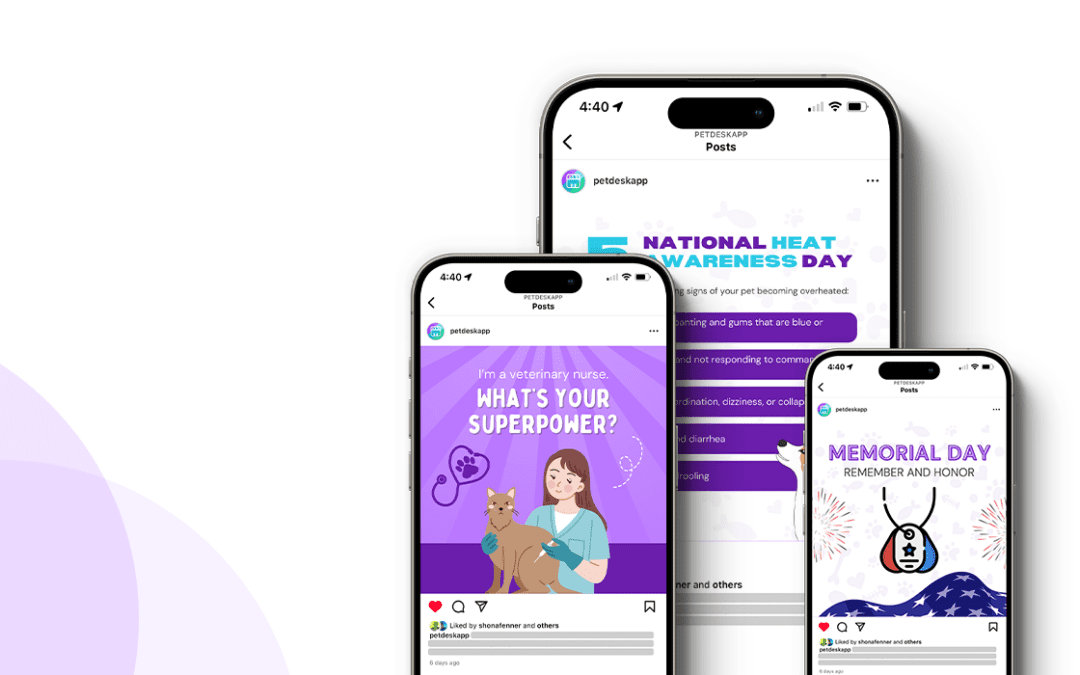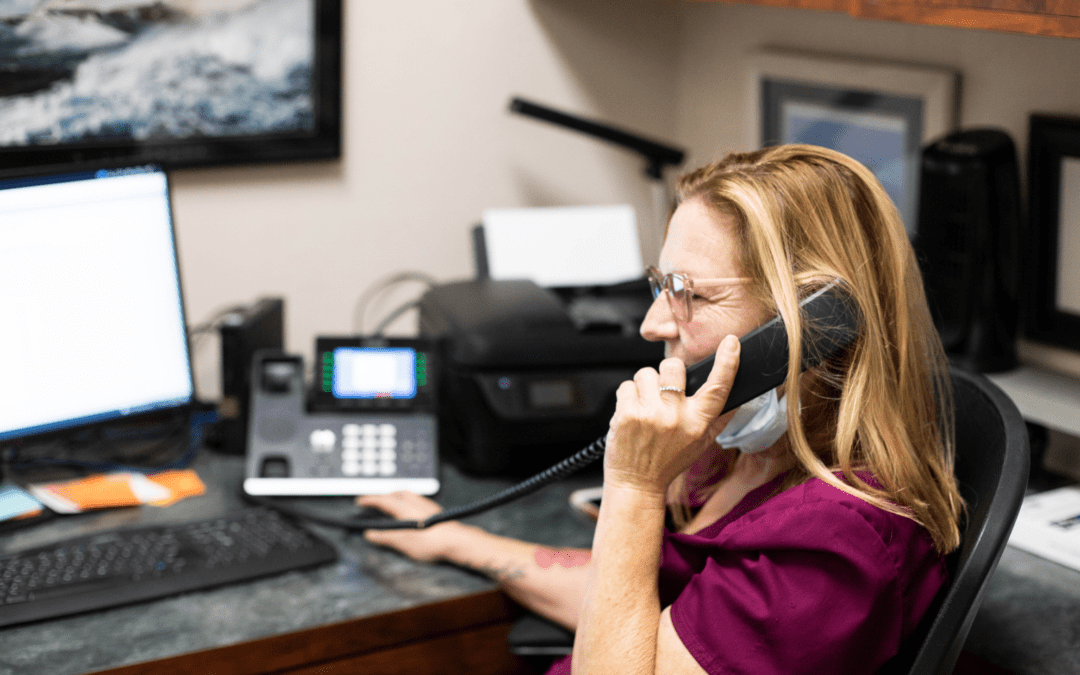Who’s hiring? Ask that question amid a group of veterinary practices, and you will get a resounding “We are!” from nearly everyone there. Everyone is hiring and everyone is busy. Whether for veterinarians, veterinary technicians, receptionists, or kennel technicians, the demand far outweighs the supply. In fact, veterinarians, veterinary technicians, and other support staff positions are poised to grow at 16% year-over-year, with the industry looking to add more than 28,000 veterinarian and veterinary technician jobs by 2029.
As demand for pet care increases, practices hire (or attempt to hire) additional veterinarians to share the load. Hiring another veterinarian often accompanies hiring at least two support staff to assist with their caseload. But, many practices seeking veterinarians are waiting for what seems like an eternity. Veterinary forum groups are filled with veterinarian owners and/or managers seeking the golden ticket site to find that elusive veterinary professional.
In these times where there is a dearth of staff, how do you cope? How do you manage to continue to see clients and patients, old and new, while adapting to an increased number of visits? We see three key areas veterinary practices can expand into.
Maximize the Skills of your Veterinary Staff
Veterinarians diagnose, prescribe, do surgery, and prognose. Though it is a short list when you write it that way, everyone knows their role in the veterinary hospital is undeniably critical. However, outside of those four ethically and legally-protected tasks, veterinary staff members can do just about everything else necessary. A great place to start is with your local (state) practice acts, which delineate roles for credentialed/registered/licensed veterinary technicians. Make sure you know what roles the credentialed non-DVM staff can do and what tasks non-credentialed staff can perform. Veterinary technicians and assistants are perfectly capable of absorbing some of the overflow.
Triage Services
As long as a diagnosis is not rendered, veterinary technicians may provide advice to veterinary pet owners. They would not diagnose a condition and cannot prescribe for said condition. But, they can certainly take phone calls and teleconsult calls with owners to go over concerns and give advice. This occurs in human medicine when you speak directly to a nurse. Veterinary technicians can provide general advice and support, which may simply lead to recommendations for appointments or trips to the emergency hospital. However, clients demanding to get seen who cannot be fit in to see the veterinarian could be offered a veterinary technician teleconsult as a first step.
PetDesk’s Video Chat can help here! Connect with pet owners face-to-face and let your technicians manage triage calls to give clients advice and peace of mind. This means one app and one experience for your clients: the same app that delivers health service reminders can help you deliver care.
Test Results Review
Veterinary technicians are perfectly capable of reviewing laboratory or radiology results with an owner. Especially if these results are normal. If a pet is seen for a condition, the veterinarian examines the pet and orders tests before prescribing medication. After the pet has been sent home, a veterinary technician could call the owner, go over the normal results, and discuss the medications and the steps for administration. This limits the time needed for the veterinarian to have to spend with the pet owner, freeing them up for other time-sensitive and demanding tasks.
A two-way communication tool like PetDesk’s Two-Way messaging can save you valuable time. For example, if a patient is present for services and has testing done, most often it will not come back for a few days. If the results are normal, the client can be sent a message like the following:
“Dear Mrs. Smith, we received Fluffy’s bloodwork and fecal test and all is normal. Congratulations on taking such great care of your furbaby! We look forward to seeing you next year for Fluffy’s next check-up. If you have any questions or concerns, you may text us back or call us at (XXX) XXX-XXXX.”
Furthermore, you can quickly create this message as a template for the next time you need to send a similar message. Each of these messages will save the multiple minutes it would take to call Mrs. Smith, have it ring 8 times, go to voicemail, disconnect from voicemail, call back, get a busy signal because Mrs. Smith is calling the clinic, and so on. Saving 1 minute on 30 pets a day is 30 minutes back in your day! What could you do with an extra 30 minutes?
Chronic Condition Counseling
Another fantastic role veterinary technicians can play is in providing support and counseling to clients with pets facing chronic conditions. Obesity, diabetes mellitus, gastrointestinal issues, cancer, and other chronic conditions require long-term monitoring and nursing care. Suppose a diabetic patient presents for a blood glucose curve as a monitoring tool. In that case, the curve is performed, the veterinarian reviews the results and decides to adjust the insulin regimen, the veterinary technician can review everything with the owner and counsel them on what to watch for when insulin is changed.
Again, rather than trying to explain all this (unfamiliar content) to the client, it’s much easier to create an email or text response to aid your client in comprehending any changes to their pet’s plan. Your clinic can text links to Youtube videos your doctor approves or other video services for information on your clients’ various conditions with their pets. Additionally, emails with information about chronic diseases, and how to prevent them, can be sent via mass email to keep your clients informed and engaged.
Technician Appointments
Did you know technicians can see their own appointments? Tech appointments are growing in popularity. For example, Banfield planned to complete 30,000 veterinary technician appointments by the close of 2019. Veterinary technician appointment ideas are endless:
- Mid-year assessments (temperature, weight, skin/coat/gum check)
- Vaccines
- Ear cleanings
- Anal gland expressions
- Nail trims
- Bloodwork/fecal/urinalysis testing
- Heartwork/FeLV testing
All of these (and more) can be performed during a tech appointment, under the direction and supervision of a veterinarian. This will help alleviate the appointment backlog, allow credentialed (or non-credentialed) staff to see some routine appointments, and even grow, develop and motivate the support staff, who may be facing burnout.
PetDesk’s appointment request feature can set expectations and help you spread appointments across your staff. Make sure to set up your PetDesk appointment request features to include “Technician Appointment” in the dropdown to allow your clients to select this option. Educate your clients on what services a veterinary technician can provide. Get them used to selecting this option if their pet care need does NOT require a diagnosis, prognosis, procedure, or prescription.
Enhanced Anesthesia Duties
Too often, I see veterinary practices waste precious time preparing patients for surgery. Often, veterinary technicians ask the surgical veterinarian for drugs to provide anesthesia. The veterinarian must find the patient’s weight and calculate all drug doses. Though it takes few minutes, preparing drug doses is a task the anesthesia technician should complete. A regular concern I hear expressed here is, “I do not trust the technicians to calculate drugs”. Both scary and strange as, if that’s the case, then how can you trust them to monitor anesthesia?
Once the patient is under anesthesia, it is not uncommon for the veterinary technician to have to ask the veterinarian for advice, drug dosages, and guidance on a variety of issues that may arise intraoperatively. I am all for collaboration, and the veterinarian should be routinely updated as to the patient status. But, asking a veterinarian, with their hand up to the wrist in a patient’s abdomen, to calculate an Atropine dose in their head, is neurologically similar to talking on a cell phone while driving. We’d like to think it’s possible to multi-task, but it’s really not. Knowing this, it seems dangerous for the veterinarian to need to switch from focusing on surgery to focusing on anesthesia, especially when there is a trained professional to own that task.
Alternatively, I suggest the following approach. Veterinary technicians are typically charged with providing anesthesia to pets while the veterinarian performs surgery. Here are some ways to “speed” up that process.
- Develop some accepted anesthetic protocols for your practice. You can obtain these from a variety of reputable sources.
- With guidance, veterinary technicians can receive the anesthesia patient for the day, and begin to dose and prepare the drugs for the procedure using the previously approved guidelines established by the veterinarian. This covers the legal requirement for the veterinarian to be prescribing medication.
- Once the veterinary technician has the drug regimen ready, they can present the plan to the veterinarian, who, after review, can sign off on the plan, ensuring they have reviewed it.
- The veterinary technician can then induce, intubate, and establish maintenance anesthesia for the patient while the veterinarian prepares for surgery.
- While the patient is under anesthesia, the veterinary technician can follow protocols designed to provide the technician the steps for dealing with a multitude of anesthesia emergencies (such as low blood pressure, low heart rate, etc.).
The ability to work from protocols allows the technician to troubleshoot the anesthesia while the veterinarian focuses on finishing the surgery.
Closing Thoughts
I do not believe veterinary medicine will ever be less busy. I believe it will become even busier as the pet parents who adopted during the pandemic start to see signs of health issues in their new family members. Unfortunately, we are not graduating veterinarians or veterinary technicians at a rate to keep up with the demand. In these trying times, rather than fighting against the tsunami, we must work more efficiently by utilizing time hacks and technology. Look for opportunities to harness the way the current is moving instead of fighting it.
What will you do starting Monday? I suggest picking ONE item on this list you think will work at your practice. Schedule some time to meet with the veterinarian/owner, all or a few of the doctors, a representative from the front desk, and a technician. Gather them in a room for 30 minutes. Present the problem, present the solution. Expect pushback. Work through each item, and after navigating their concerns, see if they will give it a go! Many times we just need a push to be great.
David Liss, MBA, CVPM, PHR, RVT started his career as a veterinary technician in emergency medicine in 2003. During his time as an on-the-floor veterinary technician, he oversaw two 24-hour specialty referral practices as Technician Manager and obtained two veterinary technician specialty certifications, in emergency and critical care and internal medicine. David then became the Program Director of a veterinary technology associate’s degree program in Los Angeles for several years. David returned to management to lead a 24-hour general practice and emergency hybrid hospital and became a certified veterinary practice manager (CVPM) and professional in human resources (PHR). He currently is the regional director of operations for Amerivet Veterinary Partners in the LA area, completed his MBA in 2020, and lectures worldwide.






